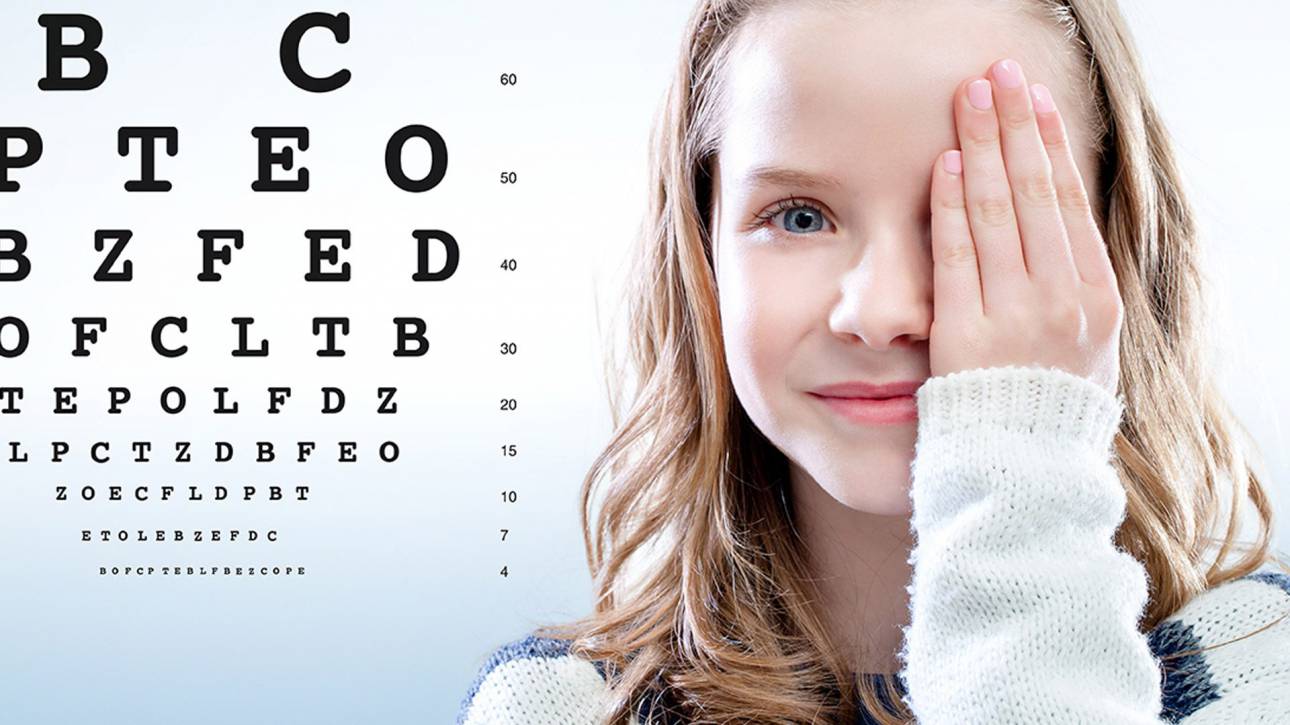Index
La myopia is a visual defect caused by aimperfection in the geometry of the eye. The eyeball, in fact, to focus images correctly on the retina must have a crafts spherical (emmetropic eye). If the eye is longer than it should be, the images are blurry.
The length of the eyeball can be measured with specific instrumental tests and on average an emmetropic eye can measure from 23,0 to 23,5 mm.

In the emmetropic eye, light is focused precisely on the retinal plane, generating perfectly sharp images. In the myopic eye, on the other hand, light coming from afar is focused in front of the retinal plane, generating blurred images.
Myopia can be of different entities and is defined as "lieve” up to 3 diopters, “medium” from 3 to 6 diopters and “high” beyond 6 diopters.
It is usually theexcessive length of the eyeball to determine myopia, in particular the higher one (in this case we speak of axial myopia). In some cases, however, myopia can be caused by one excessive curvature of the cornea or lens (refractive myopia) or by a refractive index of the crystalline nucleus higher than normal (index myopia).
Symptoms
Myopia causes blurry vision for distance (but not near) and often headache due to constant effort to focus on distant objects that are out of focus.
Diagnosis
Myopia can be diagnosed with one basic eye examination through the reading of the characters of the optotype table. A'more in-depth instrumental investigation allows you to determine if myopia is axial, refractive or index.
The instrumental tests most used for the characterization of myopia are:
- lo IOL-Master, which measures the length of the eyeball (the main cause of myopia),
- theautorefractory, which provides anatomical and refraction parameters of the cornea,
- la corneal topography, which identifies possible asymmetries of the cornea that can give rise to myopic defects,
- la corneal pachymetry, which measures the thickness of the cornea,
- theB-Scan ultrasound, which highlights the possible presence of morphological and structural alterations, such as for example the degeneration of the peripheral retina due to excessive elongation of the eyeball, in very myopic patients.
How does a nearsighted person see?
Myopic people see clearly up close but blurry at a distance. The degree of blurriness increases proportionally to the severity of the myopia itself. For example, as shown in the image, a patient with a myopia of three diopters will see objects perfectly sharp up to a distance of 30 centimeters but out of focus beyond that distance.


Correction of myopia
Myopia can be corrected through the use of glasses with biconcave lenses o divergent, negative dioptric power, with a gradation appropriate to the visual defect. As an alternative to glasses, especially in patients with high myopia, glasses can be used contact lenses.
Refractive surgery
Myopia can be permanently corrected or significantly decreased thanks to the refractive surgery. There are various refractive surgery techniques, all based on modifying the curvature - and therefore the dioptric power - of the cornea, in such a way as to compensate for the refractive defect. Depending on the thickness of the patient's cornea, it is now possible to correct myopias up to 10-11 diopters.
La photorefractive keratectomy (PRK, Photo Refractive Keratectomy) is a refractive surgery technique that has been performed for several decades to correct the refractive defect and eliminate glasses or contact lenses thanks to the use of a excimer lasers.
PRK surgery is performed under local anesthesia and lasts for a few minutes. The excimer laser allows to achieve a "vaporization" of the most superficial corneal structure, which includes the corneal epithelium, Bowman's membrane and part of the corneal stroma. Thanks to this procedure, the images are refocused on the retinal plane and the patient can see correctly again in a clear manner in a short time, without the need for glasses or contact lenses.
The technique iLASIK (Intra-Laser In Situ Keratomileusis) was developed after the PRK and differs from the latter for the method of application of the excimer laser: in PRK the laser is applied to the superficial part of the cornea after removing the outermost epithelial layer, while in iLasik the laser is applied to the innermost stromal layer of the cornea thanks to the creation of a "corneal flap”, which consists of a thin layer of cornea that is made by making an incomplete circular incision with a femtosecond laser and overturning the very thin layer of cornea included inside the incision and covering the stroma.
The possibility of modeling the cornea by acting directly on the stroma allows for a immediate visual recovery e absence of pain in the postoperative period.
Both PRK and iLasik are characterized by a extremely high level of security, unrivaled in the field of eye surgery, and allow to achieve in properly selected patients results close to 100% compared to the set objectives.
iLasik represents an evolution over PRK and has some advantages over the latter, however not all patients are suitable for this procedure. The choice of the type of refractive surgery to adopt for each specific candidate, iLasik or PRK, must be evaluated by the ophthalmologist on the basis of certain anatomical parameters of the eye.
Pathology and treatment on video
Answers to frequently asked questions
What is myopia?
Myopia is a visual defect that causes the inability to see clearly from afar.
How do people with myopia see?
Those with myopia see well up close but not from afar; the maximum distance at which he can focus correctly is the lesser the stronger the myopia.
Who is nearsighted sees better up close?
People who are nearsighted can see well up close but not far. At a young age, those who are nearsighted see as well up close as those who are not nearsighted. When, with advancing age, presbyopia sets in – which makes it difficult to focus up close – myopia compensates for the presbyopia and allows you to read well up close without glasses (neither for myopia nor for presbyopia).
When does myopia come?
Myopia typically occurs at a young age, most frequently in school age, but sometimes also in early childhood or adulthood. One type of myopia, called index myopia, can occur late in life due to cataracts.
How many degrees do you have to have to be nearsighted?
Myopia is the inability to see well at a distance and can range from -0,25 degrees to over -20 degrees.
How is myopia corrected?
Myopia can be corrected with eyeglasses or contact lenses. Myopic lenses are biconcave or diverging and have a negative dioptric power.
Can myopia be eliminated?
Myopia can be eliminated permanently – partially or completely – thanks to refractive surgery. Today there are multiple procedures based on the use of different laser techniques (PRK, LASIK, iLASIK, SMILE).
Is myopia dangerous?
Myopia is not a pathology but depends on an incorrect geometry of the eyeball, the cornea and sometimes the lens, so in itself it is not harmful or dangerous to eye health. However, when the anatomical defect is particularly accentuated, there may be a greater risk of the onset of some important eye pathologies, such as peripheral retinal degenerations, retinal detachment, glaucoma etc.
Insights
Do you need more information?
Do not hesitate to contact me for any doubt or clarification. I will evaluate your problem and it will be my concern and that of my staff to answer you as quickly as possible.




